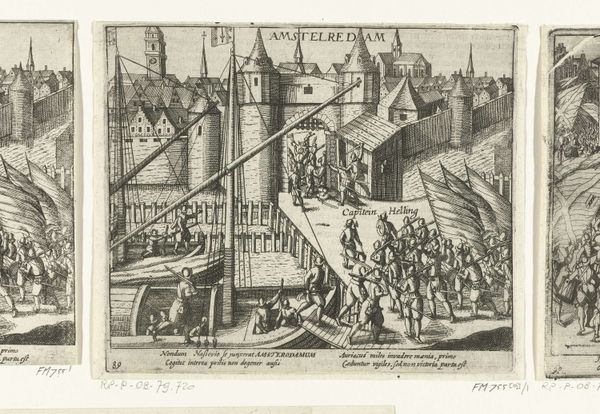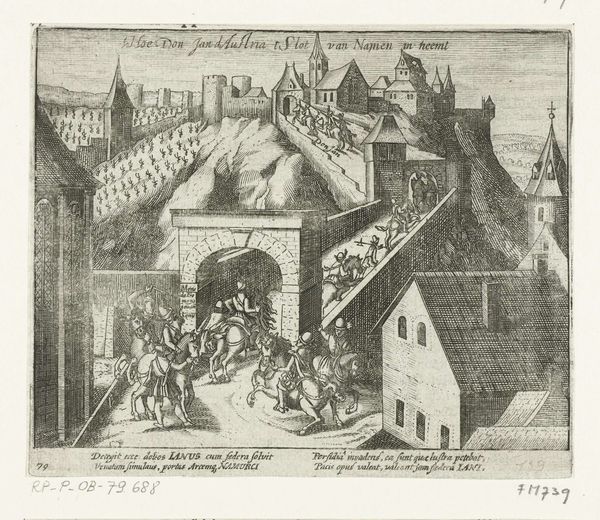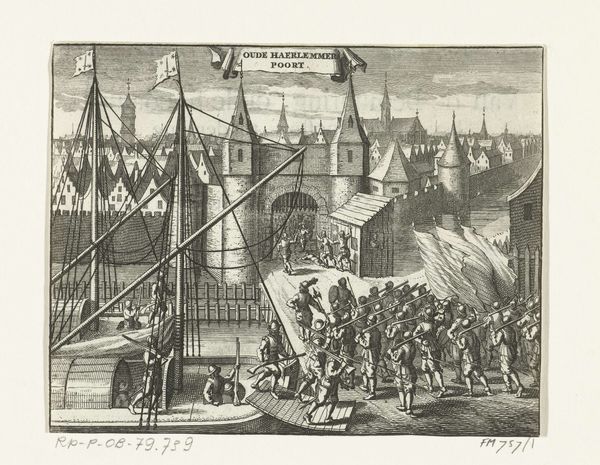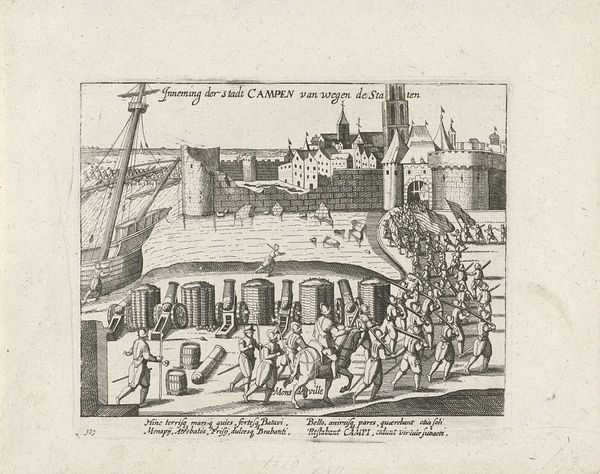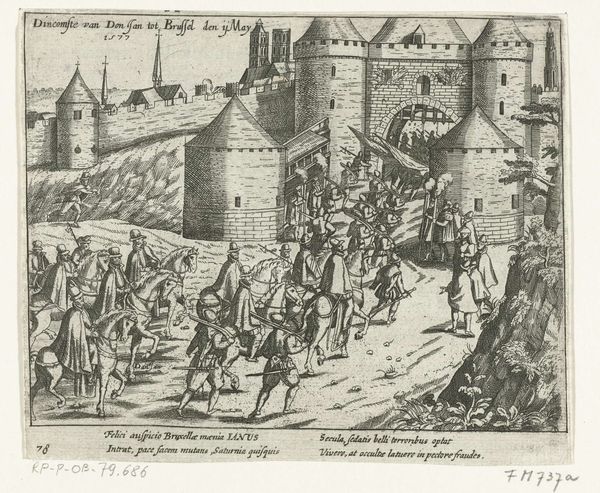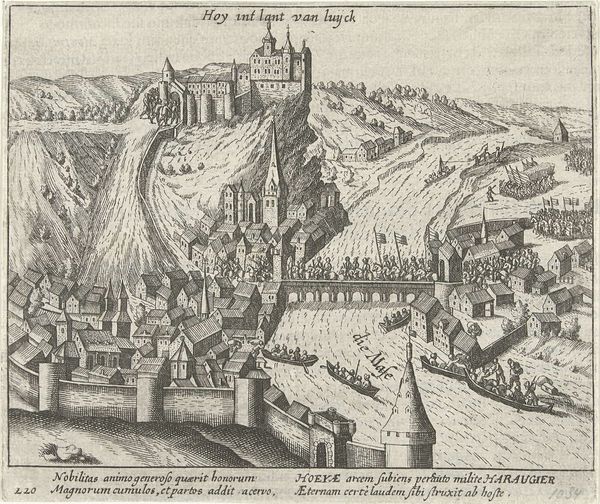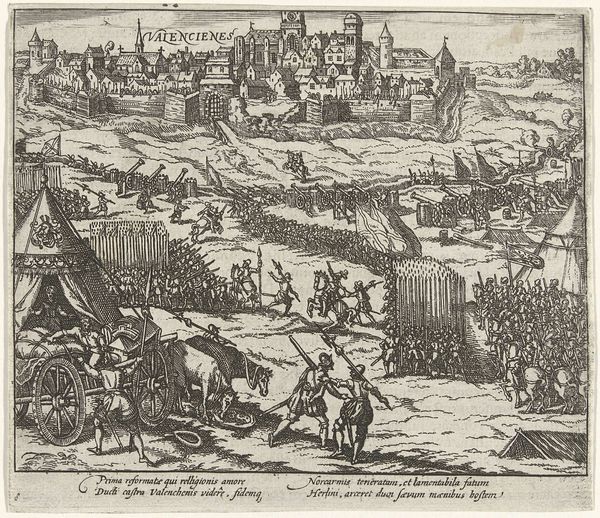
print, etching, engraving
#
baroque
#
dutch-golden-age
# print
#
pen illustration
#
etching
#
old engraving style
#
landscape
#
pen work
#
cityscape
#
history-painting
#
engraving
Dimensions: height 117 mm, width 135 mm
Copyright: Rijks Museum: Open Domain
Editor: This etching, titled "Poging om Amsterdam in te nemen, 1577," is attributed to an anonymous artist and dates from 1662 to 1665. What strikes me is the detailed depiction of the siege; you can almost feel the tension in the air. What kind of a story is being told here? Curator: This print offers us a window into how historical events were consumed and understood in the Dutch Golden Age. The depiction of the siege is certainly dramatic, but it's crucial to consider the socio-political context. Do you notice anything about the way the figures are represented or the perspective chosen? Editor: The attackers seem quite organized, almost ceremonial in their approach. And the city itself looks formidable, but perhaps vulnerable with those figures pouring into the gate? Curator: Exactly. Prints like these weren't just records of events; they were often carefully constructed narratives shaping public opinion. This image, produced decades after the actual event, would have served to reinforce ideas about Dutch resilience and the importance of vigilance. What impact might this imagery have had on the collective memory of the Dutch people? Editor: It's interesting how art could be a form of historical narrative, isn't it? So it's not just about what happened, but how the artist *wants* you to see it happened, playing on Dutch values. Curator: Precisely. The engraving medium itself plays a role. Accessible and reproducible, prints disseminated political messages far and wide, becoming vital tools in constructing a shared national identity and history. Do you think its display within the Rijksmuseum changes our view of its purpose today? Editor: I hadn't thought about that, but positioning it within a museum certainly elevates it from mere political tool to something we consider historically significant. Food for thought. Thanks!
Comments
No comments
Be the first to comment and join the conversation on the ultimate creative platform.
